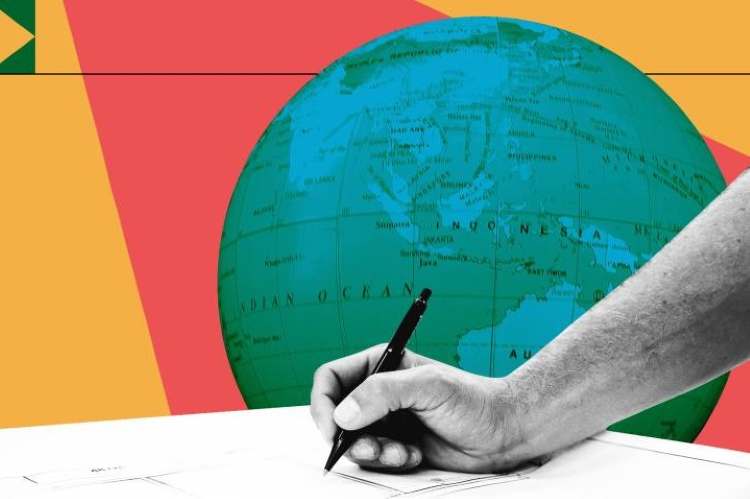The world will gather in Brazil this November for COP30, the next major UN climate conference. For India, the summit carries particular weight. It will unveil its third nationally determined contribution — the updated climate action plan extending to 2035. This marks a defining moment in India’s climate diplomacy, shaping the next chapter of its commitments under the Paris Agreement. While New Delhi will likely raise its emission-reduction and clean-energy targets, it is expected to avoid introducing new elements. Yet, India’s most consequential move may not lie in fresh mitigation pledges but in reframing the global climate conversation itself.
For decades, climate negotiations have been dominated by carbon arithmetic — who cuts how much, and by when. But for developing nations like India, the more urgent battle is against the effects of climate change already at hand. Monsoon disruptions, coastal erosion, and heatwaves are no longer projections; they are lived realities. The country’s monsoon-dependent agriculture, fragile coastlines, and expanding heat zones make adaptation an existential priority. India has an opportunity to reposition itself as a leader of adaptation-focused climate action — one that centres on endurance and resilience, not merely emission numbers.
READ I Menstrual leave is a partial remedy, not a panacea
Progress and limits of mitigation
India’s record on mitigation is notable. It has met one of its three major NDC goals ahead of schedule: non-fossil fuel sources now account for over half of installed electricity capacity. Emissions intensity fell 36% between 2005 and 2020, keeping the country on track to exceed its 45% reduction target by 2030. The expansion of forest and tree cover, aimed at creating an additional carbon sink of up to 3 billion tonnes, is also progressing steadily.
But such success offers little protection against climate shocks. In 2024 alone, India experienced severe northern floods, relentless urban heatwaves, and erratic monsoons that hit farm incomes hard. Mitigation, while essential, cannot by itself safeguard livelihoods. The next frontier is adaptation — through systemic resilience-building in agriculture, water management, health, infrastructure, and finance.
India’s opportunities at COP30
India’s NDC submission at COP30 can double as a diplomatic statement: that adaptation must occupy equal space in the global climate framework. A recent OECD commentary argued that adaptation should sit “at the core of climate policy.” This aligns closely with India’s reality as one of the six most climate-vulnerable nations.
New Delhi could press for a recalibration of climate finance — advocating for predictable, non-reimbursable adaptation grants rather than debt-heavy loans. Today, less than a quarter of global climate finance supports adaptation. India can use its platform to propose a *Global Resilience Fund* with transparent disbursement norms and regional access mechanisms.
The imbalance in adaptation finance is not merely a gap of intent but one of politics. Developed nations have yet to fulfil the $100 billion annual pledge made in 2009, and much of what is counted as climate aid arrives as loans rather than grants. The debate over the newly established Loss and Damage Fund, a key outcome of COP28, highlights this divide. Its operational details — who contributes, who benefits, and under what conditions — remain unresolved.
For India, this is both a challenge and an opportunity. It can rally developing countries to demand clearer accounting of adaptation finance and transparent criteria for disbursement. Without this, global climate solidarity risks becoming another deferred promise.
The domestic blueprint for adaptation
India’s own experience reveals how adaptation can work when local governance is empowered. Odisha’s cyclone shelters, Gujarat’s coastal embankments, Rajasthan’s water-harvesting systems, and Kerala’s flood early-warning networks have demonstrably saved lives and livelihoods. The lesson is clear: effective adaptation begins locally but must be scaled nationally.
A coherent national adaptation policy could consolidate fragmented efforts by pooling resources from existing green bonds, adaptation funds, and state disaster pools. Such an approach would also enable systematic measurement of resilience outcomes — through indicators like flood recovery time, crop yield stability, and heat-related mortality reduction.
Public finance alone cannot meet the scale of India’s adaptation needs, which will run into tens of billions of dollars annually. What is required is a deliberate mobilisation of private capital through innovative financial instruments.
Green and resilience bonds, sustainability-linked loans, and insurance-based instruments can attract institutional investors seeking stable, long-term returns. Platforms such as GIFT City and the Climate Finance Leadership Initiative (CFLI) India can serve as testing grounds for such market-based solutions. Blending concessional finance with private risk capital would create a multiplier effect—channelling investment where it is most urgently needed, from resilient urban infrastructure to climate-smart agriculture.
Institutional reform and coordination
India’s challenge lies not in intent but in institutional design. Adaptation remains scattered across ministries. A whole-of-government approach is now essential, with coordination between urban development, agriculture, water, and health ministries under shared climate-resilience goals. Strengthening data-sharing, inter-ministerial task forces, and integrated financing frameworks will be key to operationalising this shift.
India’s push for adaptation leadership should not be mistaken for easing mitigation ambitions. The transition to clean energy — from solar expansion to emerging green hydrogen ecosystems — remains central to its economic and environmental strategy. Yet, India can reset the moral compass of climate negotiations by asking the question that haunts the developing world: Who will protect those already suffering from others’ emissions?
Adaptation must no longer be viewed as a welfare expense but as an investment in productivity and national security. Every rupee spent on early warning systems, resilient infrastructure, or drought management saves multiple times that amount in recovery costs.
As COP30 convenes in Brazil, many nations will bring new emission numbers. India, instead, can offer a new definition of success — measured not merely in tonnes of carbon avoided but in lives protected, economies stabilised, and ecosystems sustained.

